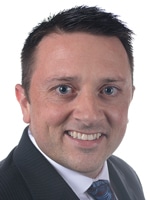Anne Paxton
September 2019—There’s nothing new about lab and pathology reimbursement cuts that threaten bottom lines. Over the past three or four decades they’ve become essentially part of the wallpaper in health care. “The constant shell game of reimbursement policies that payers put into place has been a running theme as long as I’ve been involved with laboratories,” says Kurt Matthes, vice president of revenue cycle management reengineering and service for Telcor, Lincoln, Neb.
It’s a theme with variations, though, and recent new twists in not only reimbursement policy but also claims processing and patient collections, plus the burgeoning complexity and security issues of online data, have helped turn revenue cycle management—capturing, managing, and collecting patient service revenue—into a $32 billion industry geared largely to reducing health care providers’ financial anxiety and stress.
Matthes and other executives at top laboratory billing and revenue cycle management companies agree that the nature and depth of the latest cuts along with other billing trends are presenting labs with not only the familiar challenges but also many other sources of worry.
As an executive who entered the laboratory billing component, or “back end,” of the laboratory business in 2007 after 20 years of other laboratory operations jobs ranging from pre-testing operations to supervising medical technologists to systems manager, Matthes has a long perspective of his own. But in talking recently with Telcor’s pathology customers to see what is most on their minds today, he found striking common threads.
On a day-to-day level, chronic denials and delays of payment are his customers’ most frequently cited concerns. “There are a lot of barriers to payment. Think of things like prior authorization of services, or new precision medicine tests that they might be offering that are considered experimental and investigational and that will result in denials,” Matthes says.

Matthes
Across its customer base, Telcor is hearing serious concern about pay policy being too often inadequate, nonexistent, or unclear regarding certain key coding and submission issues. “These customers feel that labs are getting stuck in the middle between referring clinicians and payers, and labs are paying the penalty for the responsibility of medical necessity when there is a denial.”
Barriers to reimbursement are also creating backlogs in accounts receivable, Matthes says. “There’s an upswell in the monetary amounts that are in those accounts receivable, and it can take its toll on human capital to mitigate or resolve it. But also, the older a patient bill gets, the more difficult it is to collect it. The likelihood of getting anything for it exponentially starts to go down.”
Out-of-network, or surprise, billing is a serious problem because the patients are the ones taking the hit. “As a patient or a consumer, you don’t know what you don’t know,” he says. “If they take biopsies during a surgery and send them to an independent pathology group that is out of network with your payer, you don’t necessarily know that in advance, and you’re not going to do the legwork to know it in advance.”
“But the payers will know that, and they should be giving a heads-up to their patients that this might happen . . . . I don’t think that gap has been bridged well with a lot of the major carriers.”
Rate alignment strategies are also presenting hazards to laboratory income. Earlier this year, Anthem Blue Cross and Blue Shield started to realign rates with independent pathology groups basically by leveling the playing field across contracts, which are all independently negotiated, he says. Reimbursement of hospital-based providers would be at the same rates paid to independent labs and pathologists. “Rate alignment strategy starts to put those groups in alignment and says, ‘This is what we are going to pay across the board,’ a little bit like PAMA and CMS,” Matthes explains. “Other payers haven’t necessarily followed suit. But if Anthem is successful with it, other payers may simply follow suit.”
Payer education is a must, in Matthes’ view: “A pathology group making an interpretation provides a tremendous amount of value to the outcome of the patient, but the expenditure that the payers are making in regard to it isn’t commensurate with the value provided. Reimbursement seems minimal in relation to other health care services that are provided.”
Innovations in payment methods are helping address the problem of collecting from patients, Matthes says. Patients don’t necessarily know about the pathology group or that their specimen went there, so letting patients know who you are is vital. Also, offering multiple ways for the patient to pay or incentives helps labs secure timely payment. That could mean payment online with a credit card, through an installment plan, or perhaps a discount if there are no compliance issues. It could include getting the patient’s consent to send a reminder text to their cell phone. “There is this whole mentality in soft collections that is gaining more traction in the lab world,” he says.
Data and data analytics can bring huge advantages to laboratories. Having real-time access to billing data such as gross revenue; total collections over the last week, month, or year; sales trends; profitability; and payment patterns can give laboratories an edge, Matthes says. “It is that proactive mentality of wanting to find the issues that are occurring before time passes, helping avoid a reactive state.” Laboratory customers are demanding that type of data access, and companies like Telcor are responding with broad suites of analytics in their RCM software that cover almost every possible base, he says.
M ick Raich, CEO of Vachette Pathology, has been working in health since 1981 and started in pathology billing in 1996. Since launching Vachette Pathology in 2002, he has seen a lot of changes. “I have seen when hospitals first went to DRGs. I watched Detroit go from 31 hospitals to six,” Raich says. The major change he’s seen in pathology is that it is much more competitive and the margins are considerably less than they used to be.“Salaries for most of our pathologists—and we’ve worked with 10 percent of all pathologists in the nation in the last 17 years—have been in a long, steady decline as pathology groups continue to consolidate. The second major trend is a big change in the ability to negotiate with payers.” The major impact of the national surprise billing laws now evolving will be that they take away the ability to negotiate, Raich says. “The truth is, the ability to negotiate is how we stay in business. If a surprise billing law comes into play and you have to cut the rate and you can’t balance bill patients, as an unintended consequence you are going to drive down provider rates considerably.”

Raich
At one time, pathology made up a small percentage of insurance companies’ business, but now pathology and labs are a big percentage and on the radar—but they have lost the ability to negotiate, Raich believes. Over the past three to five years, he says, insurance plans often cut big deals with the large national labs at low rates and have cut other labs out of the formulary. “They’re saying, ‘We don’t even want to work with you. We are paying these guys 40 percent of Medicare. I don’t have to pay you 100 percent of Medicare.’” There is still a perception that doctors make too much money, he says, but in fact pathologists continue to make only 30 cents on the dollars they bill.
The proposed Medicare fee schedule, price transparency policies, and PAMA reimbursement cuts have short- and long-term consequences, Raich notes. “PAMA is the government’s way of saying I don’t want to pay more for something than the commercial insurance plans are paying. You can see if you play that out for a few years you are going to get to the point where everyone is getting the lowest possible payment for the test, and that’s going to drive out anybody who has any fat on their bones.”
The CMS’ mutual payment rule is its version of rate alignment and is going to be painful to a lot of companies, Raich says. In 2012, the 88305 applied technical component was cut 50 percent, and the effect was catastrophic, in his view. “What are we seeing now in the industry? A lot of these small regional dermatopathology companies being bought up. Ohio, for example, used to have 15 dermatopathology groups. Now they have three that are independent and everyone else is owned by a big dermatopathology rollout,” in the same way that pharmacies rolled up into CVS, Walgreens, and Rite Aid, he points out. “We are seeing the same thing in labs. They used to make a 20 percent margin; now it’s 10 percent or five percent and they are still holding on, but it doesn’t bode well.”
Meanwhile, data security breaches like the one that drove American Medical Collection Agency to file for bankruptcy recently will likely get worse, he predicts. “We have hospitals that have been hit with ransomware where literally a group couldn’t bill for a month.” However, he hopes that blockchain technology, which relies on recording transactions across millions of computers to make retroactive alteration of records theoretically impossible, will offer a solution.
Raich focuses on advising clients to make sure their current revenue is secure and to keep an eye down the road. “Make sure that what we can control, we control. Are we billing correctly? Are we collecting correctly? Are we auditing correctly?” Those should be the foundation, he says. “Then we look at revenue strategy going forward. For example, with the new Medicare proposed fee schedule coming out in November, we will run a revenue projection for clients and say you are going to be three cents up or three cents down so they are ready for that.” Other key questions for clients would be what contracts are coming up for renegotiation, what leverage they have to negotiate, and what companies they can merge with.
Thomas Scheanwald, president and COO of APS Medical Billing, and Matthew A. Zaborski, assistant vice president of sales and marketing for APS, agree that reimbursement rates have been straining the financial wealth and well-being of pathology practices for 30 years. Incorporated in 1960, APS is the largest privately owned pathology billing company in the country, submitting claims for clients in about 40 states out of its two core buildings in Toledo, Ohio.An additional problem, Scheanwald says, is that laboratories don’t have a good handle on their costs and what they are being paid. “So it makes it very difficult to gauge profitability and viability of a company because you can’t really forecast what kind of return you are going to be making.”

Zaborski
Many payers, starting with Medicare with its national and local coverage determinations, are setting more allowable diagnosis or ordering reasons for various common lab tests that referring physicians are not qualifying in advance, Zaborski says. “The referring providers are not forced by Medicare to check the LCDs or NCDs to ensure the tests they are ordering are payable.” Under independent labs’ typical workflow processes, that means they start processing a specimen when it comes through the door without any real indication of whether it will be paid work. “And 10 to 20 percent of the time, they are processing a test that there is no valid reason for ordering, in the payer’s eyes.”
 CAP TODAY Pathology/Laboratory Medicine/Laboratory Management
CAP TODAY Pathology/Laboratory Medicine/Laboratory Management
